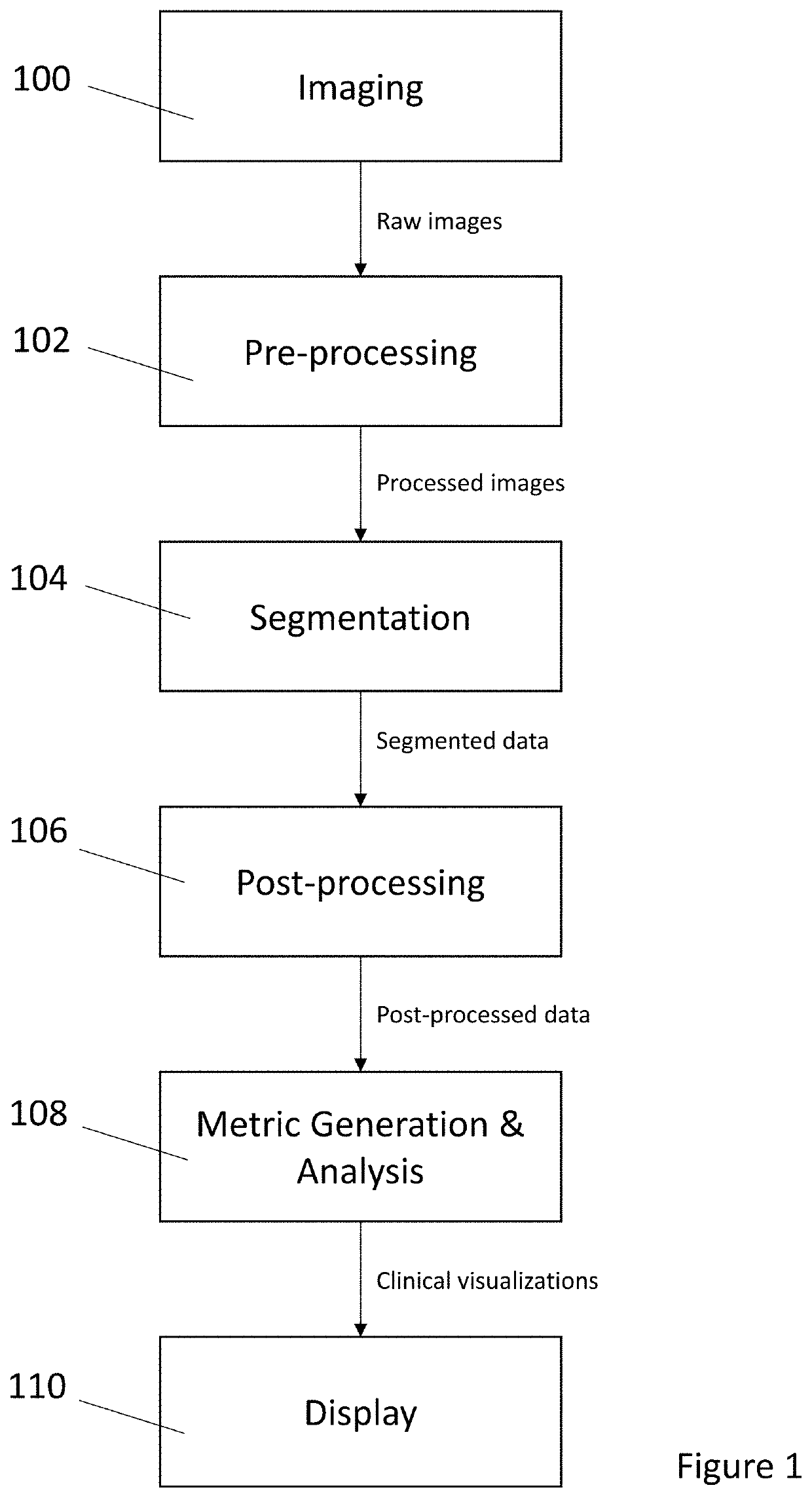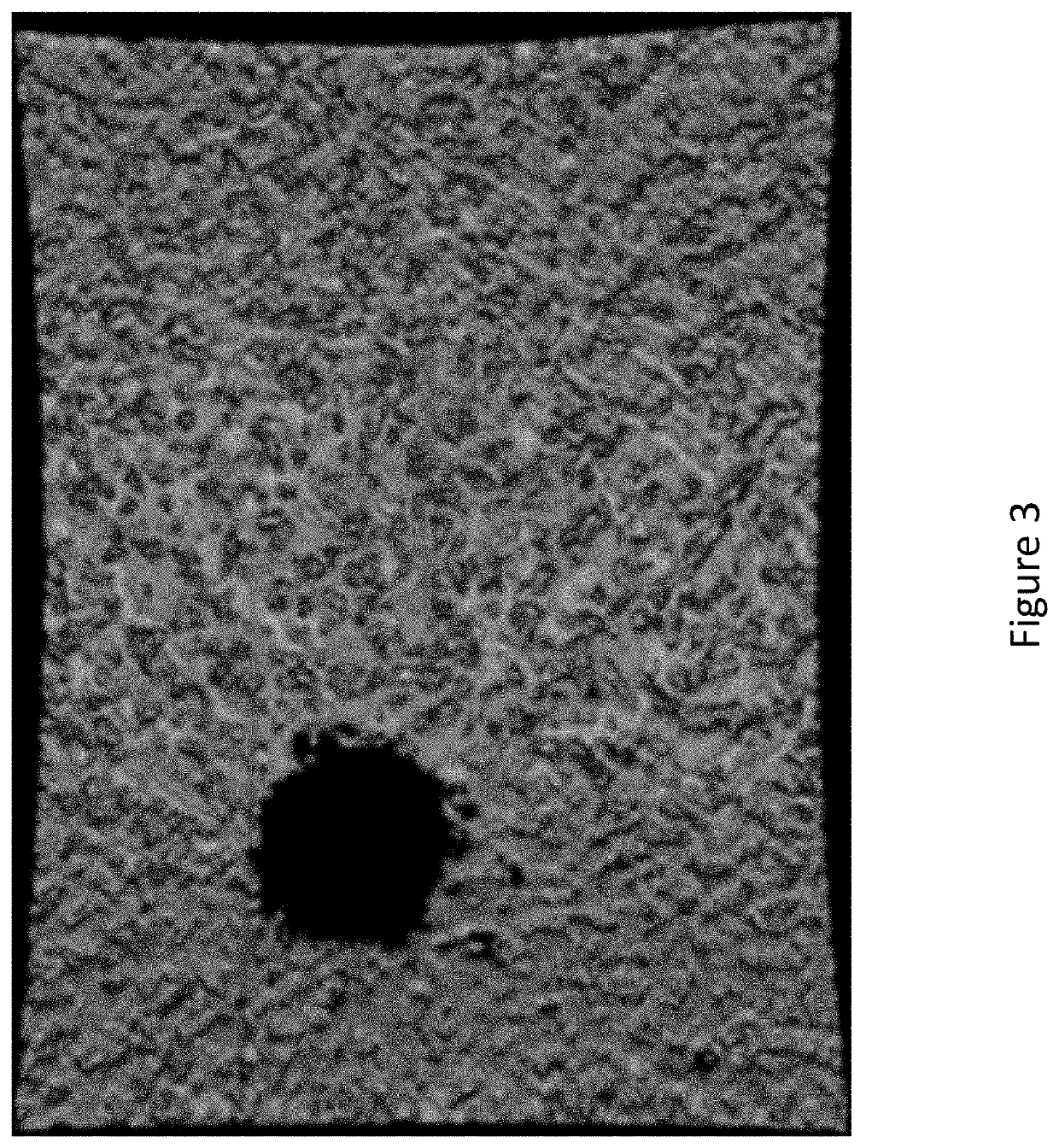3D analysis with optical coherence tomography images
a technology of optical coherence tomography and 3d analysis, applied in image analysis, image enhancement, medical science, etc., can solve the problems of lack of depth resolution of density measurement in 2d projection images, various deficiencies and limitations, and artifacts in vessel segmentation
- Summary
- Abstract
- Description
- Claims
- Application Information
AI Technical Summary
Benefits of technology
Problems solved by technology
Method used
Image
Examples
Embodiment Construction
[0014]The present disclosure relates to clinically valuable analyses and visualizations of three-dimensional (3D) volumetric OCT data that was not previously practical and / or possible with known technologies. Such analyses and visualizations may improve a medical practitioner's ability to diagnose disease, monitor, and manage treatment. Briefly, the analysis is performed on, and the visualizations are created by, segmenting OCT data for a component of interest (e.g., choroidal vasculature) in three dimensions following a series of pre-processing techniques. The segmentation can be applied to the data following pre-processing, and then combined to produce a final full 3D segmentation of the desired component. Post-processing, such as a smoothing technique, may be then applied to the segmented component. While choroidal vasculature of OCT data is particularly discussed herein, the disclosure is not to be so limited.
[0015]An example method for producing clinically valuable analyses and...
PUM
 Login to View More
Login to View More Abstract
Description
Claims
Application Information
 Login to View More
Login to View More - R&D
- Intellectual Property
- Life Sciences
- Materials
- Tech Scout
- Unparalleled Data Quality
- Higher Quality Content
- 60% Fewer Hallucinations
Browse by: Latest US Patents, China's latest patents, Technical Efficacy Thesaurus, Application Domain, Technology Topic, Popular Technical Reports.
© 2025 PatSnap. All rights reserved.Legal|Privacy policy|Modern Slavery Act Transparency Statement|Sitemap|About US| Contact US: help@patsnap.com



